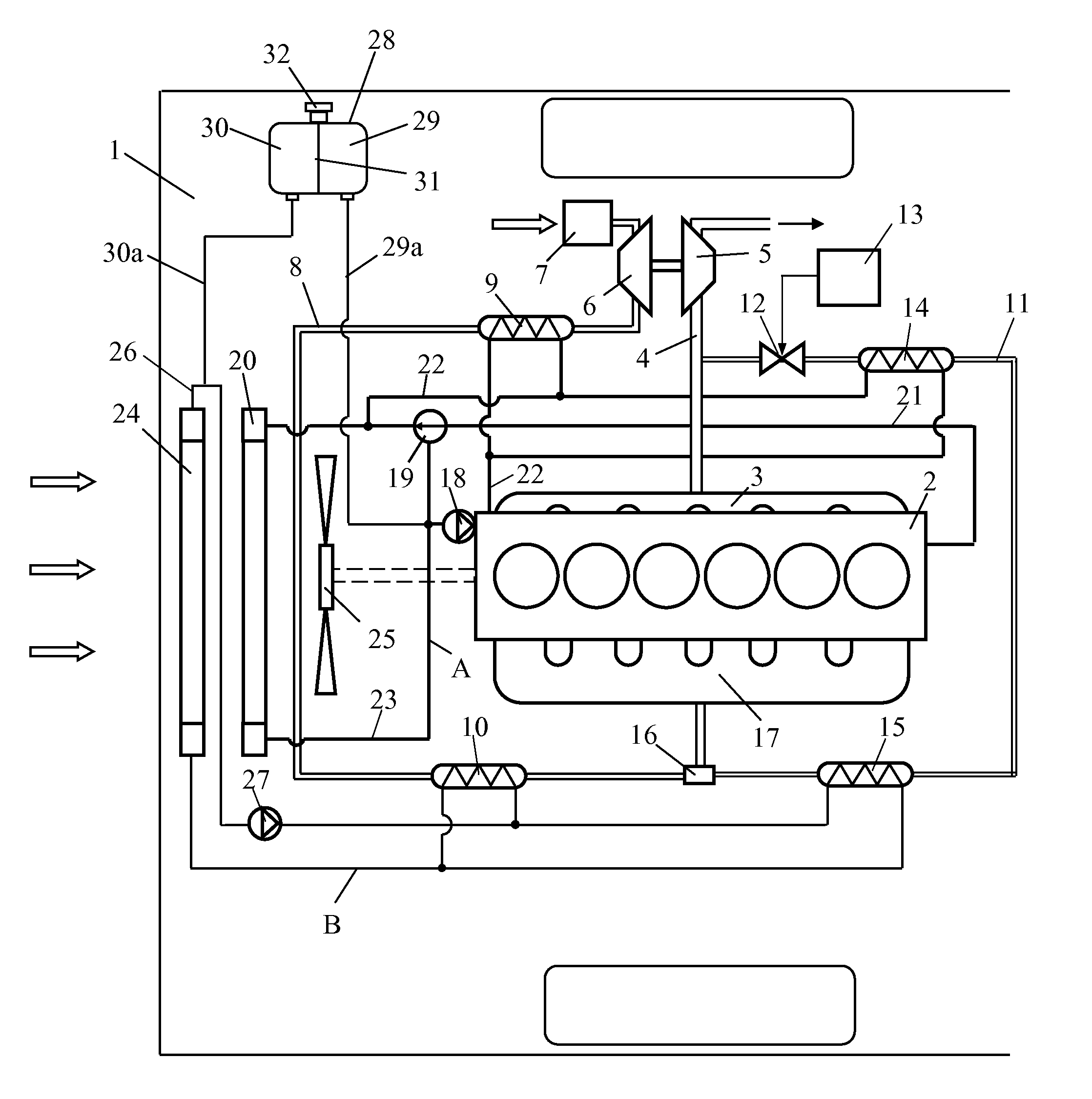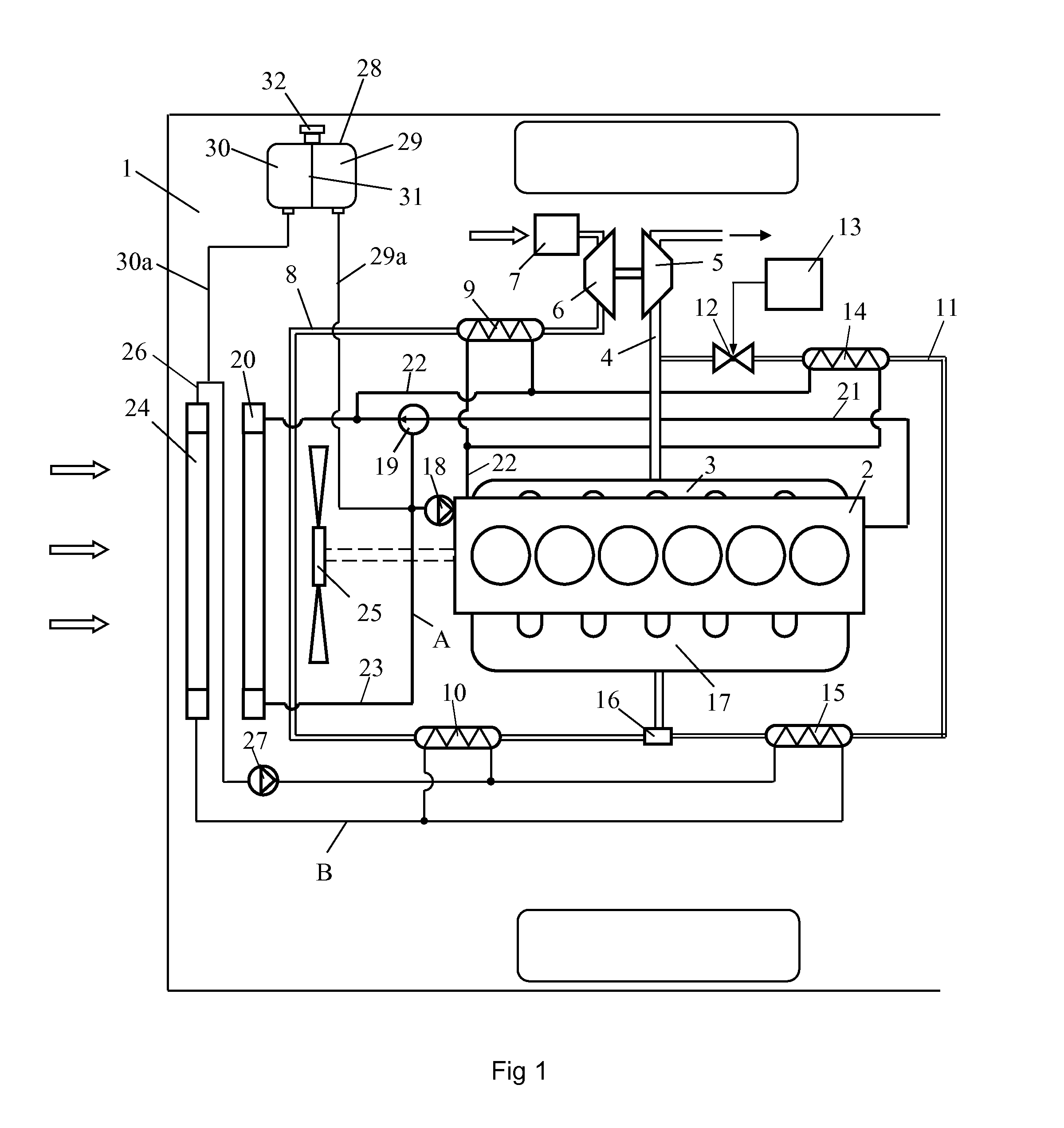Expansion tank
a technology of expansion chamber and expansion chamber, which is applied in the direction of machines/engines, transportation and packaging, containers, etc., can solve the problem of not being able to mix coolants, and achieve the effect of reducing the pressure within the expansion chamber
- Summary
- Abstract
- Description
- Claims
- Application Information
AI Technical Summary
Benefits of technology
Problems solved by technology
Method used
Image
Examples
Embodiment Construction
[0017]FIG. 1 depicts schematically a vehicle 1 powered by a supercharged combustion engine 2. The vehicle 1 is with advantage a heavy vehicle. The combustion engine is here exemplified as a diesel engine 2. The exhaust gases from the cylinders of the diesel engine 2 are led via an exhaust manifold 3 to an exhaust line 4. The diesel engine 2 is provided with a turbo unit which comprises a turbine 5 and a compressor 6. The exhaust gases in the exhaust line 4, which will be at above atmospheric pressure, are led initially to the turbine 5. The turbine 5 is thereby provided with driving force which is transferred, via a connection, to the compressor 6. The compressor 6 thereby compresses air which is drawn into an air inlet line 8 via an air filter 7. The air in the inlet line 8 is subjected to a first step of cooling in a first charge air cooler 9 by coolant from the combustion engine's cooling system A. The compressed air is thereafter subjected to a second step of cooling in a second...
PUM
 Login to View More
Login to View More Abstract
Description
Claims
Application Information
 Login to View More
Login to View More - Generate Ideas
- Intellectual Property
- Life Sciences
- Materials
- Tech Scout
- Unparalleled Data Quality
- Higher Quality Content
- 60% Fewer Hallucinations
Browse by: Latest US Patents, China's latest patents, Technical Efficacy Thesaurus, Application Domain, Technology Topic, Popular Technical Reports.
© 2025 PatSnap. All rights reserved.Legal|Privacy policy|Modern Slavery Act Transparency Statement|Sitemap|About US| Contact US: help@patsnap.com



